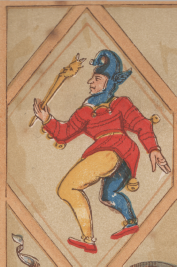Cirencester lies on the lower dip slopes of the Cotswold Hills, an outcrop of oolitic limestone.
Natural drainage is into the River Churn, which flows roughly north to south through the eastern side of the town and joins the Thames near Cricklade a little to the south.
The Thames itself rises just a few miles west of Cirencester.
The town is split into five main areas: the town centre, the suburbs of Chesterton, Stratton (originally villages outside the town), Watermoor and The Beeches. The village of Siddington to the south of the town is now almost contiguous with Watermoor.
Other suburbs include Bowling Green and New Mills.
The area and population of these 5 electoral wards are identical to that quoted above.
The town serves as a centre for surrounding villages, providing employment, amenities, shops, commerce and education, and as a commuter town for larger centres such as Cheltenham, Gloucester, Swindon and Stroud.
Roman Corinium
Corinium Dobunnorum
Cirencester is known to have been an important early Roman area, along with St. Albans and Colchester, and the town includes evidence of significant area roadworks.
The Romans built a fort where the Fosse Way crossed the Churn, to hold two quingenary alae tasked with helping to defend the provincial frontier around AD 49, and native Dobunni were drawn from Bagendon, a settlement 3 miles (5 km) to the north, to create a civil settlement near the fort. When the frontier moved to the north after the conquest of Wales, this fort was closed and its fortifications levelled around the year 70, but the town persisted and flourished under the name Corinium.
Even in Roman times, there was a thriving wool trade and industry, which contributed to the growth of Corinium. A large forum and basilica were built over the site of the fort, and archaeological evidence shows signs of further civic growth.
There are many Roman remains in the surrounding area, including several Roman villas near the villages of Chedworth and Withington.
When a wall was built around the Roman city in the late 2nd century, it enclosed 240 acres (1 km²), making Corinium the second-
Post-
The Roman amphitheatre
The Roman amphitheatre still exists in an area known as the Querns to the south-
Andrew Breeze argued that Gildas received his later education in Cirencester in the early 6th century, showing that it was still able to provide an education in Latin rhetoric and law at that time.
Possibly this was the palace of one of the British kings defeated by Ceawlin in 577.
It was later the scene of the Battle of Cirencester, this time between the Mercian king Penda and the West Saxon kings Cynegils and Cwichelm in 628.
The minster church of Cirencester, founded in the 9th or 10th century, was probably a royal foundation. It was made over to Augustinian canons in the 12th century and replaced by the great abbey church.

